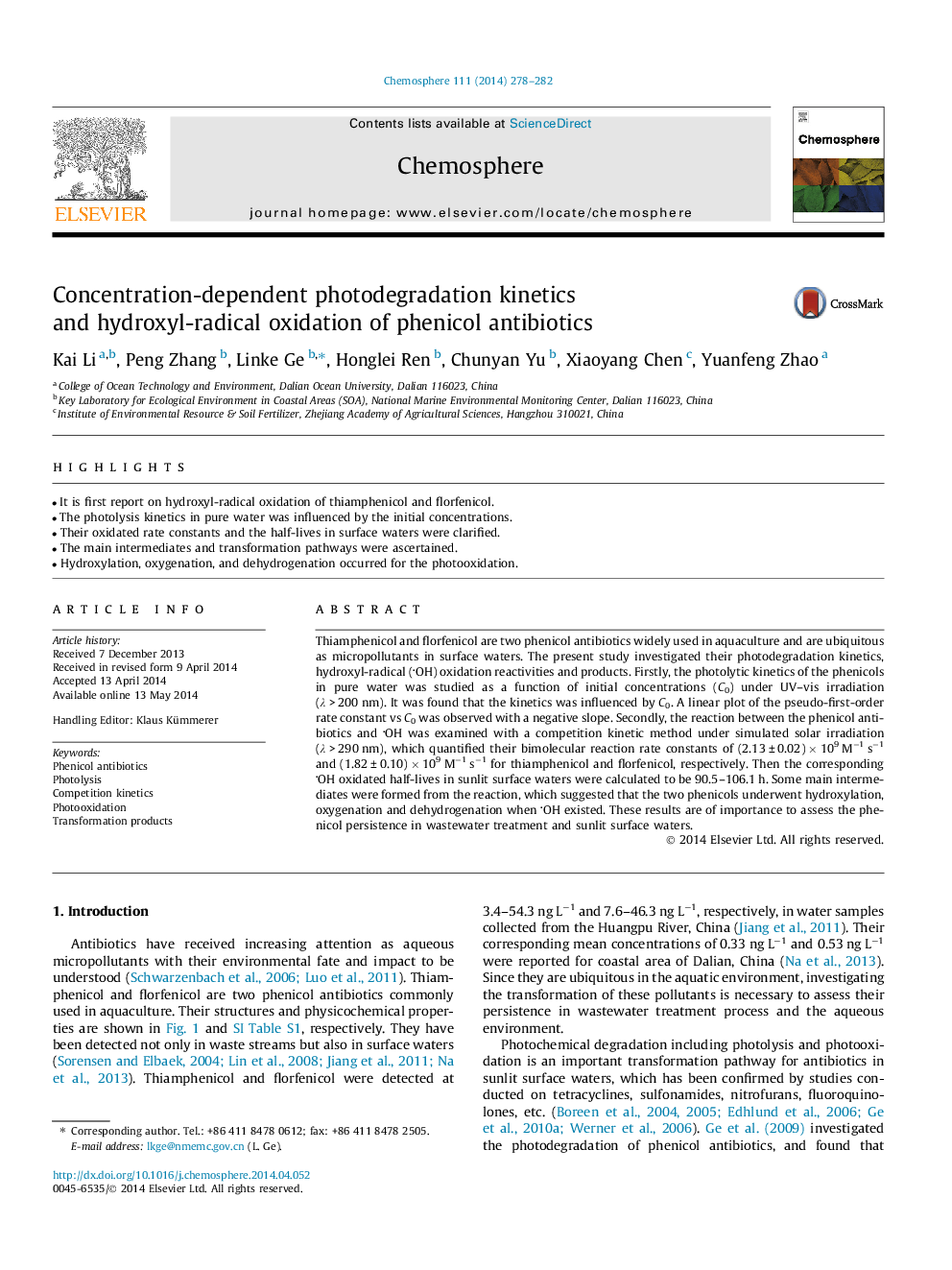| Article ID | Journal | Published Year | Pages | File Type |
|---|---|---|---|---|
| 6308662 | Chemosphere | 2014 | 5 Pages |
â¢It is first report on hydroxyl-radical oxidation of thiamphenicol and florfenicol.â¢The photolysis kinetics in pure water was influenced by the initial concentrations.â¢Their oxidated rate constants and the half-lives in surface waters were clarified.â¢The main intermediates and transformation pathways were ascertained.â¢Hydroxylation, oxygenation, and dehydrogenation occurred for the photooxidation.
Thiamphenicol and florfenicol are two phenicol antibiotics widely used in aquaculture and are ubiquitous as micropollutants in surface waters. The present study investigated their photodegradation kinetics, hydroxyl-radical (OH) oxidation reactivities and products. Firstly, the photolytic kinetics of the phenicols in pure water was studied as a function of initial concentrations (C0) under UV-vis irradiation (λ > 200 nm). It was found that the kinetics was influenced by C0. A linear plot of the pseudo-first-order rate constant vs C0 was observed with a negative slope. Secondly, the reaction between the phenicol antibiotics and OH was examined with a competition kinetic method under simulated solar irradiation (λ > 290 nm), which quantified their bimolecular reaction rate constants of (2.13 ± 0.02) Ã 109 Mâ1 sâ1 and (1.82 ± 0.10) Ã 109 Mâ1 sâ1 for thiamphenicol and florfenicol, respectively. Then the corresponding OH oxidated half-lives in sunlit surface waters were calculated to be 90.5-106.1 h. Some main intermediates were formed from the reaction, which suggested that the two phenicols underwent hydroxylation, oxygenation and dehydrogenation when OH existed. These results are of importance to assess the phenicol persistence in wastewater treatment and sunlit surface waters.
